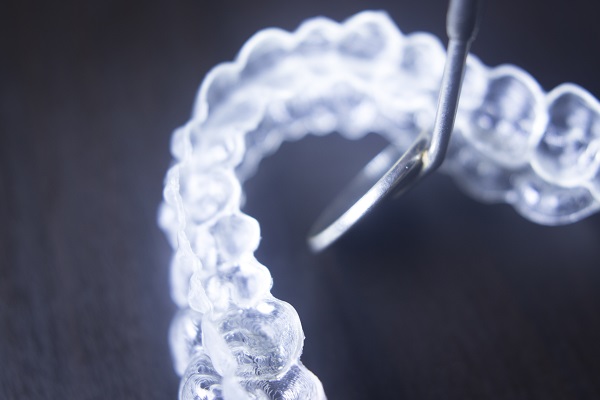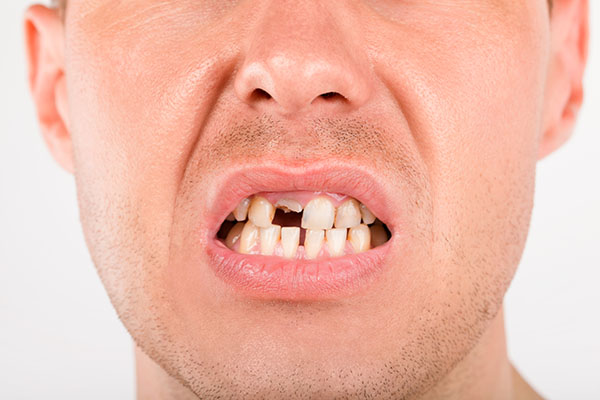Adult Teeth Straightening: Day to Day With Invisalign

Invisalign® is a popular treatment for adult teeth straightening. The nearly invisible appearance of the technology makes it a great option for adults looking for a method of straightening teeth that minimally impacts the appearance of their smiles during treatment. For those considering Invisalign®, here is what to expect each day from beginning to end.
The process
The entire procedure can take anywhere from several months to over a year, with the average timeframe around 12 months. The Invisalign® method uses a series of individualized clear aligner trays to gradually shift and straighten teeth. The process involves a number of steps from initiating the treatment to reaching the goal at the end.
Getting started
In order to begin treatment, a dentist needs to evaluate a patient's compatibility with the technology. While the aligner trays can successfully straighten many smiles, it is not an appropriate option for every situation. Once a dentist has determined the patient is a good candidate, an individualized treatment plan is created. The specialized technology of Invisalign® allows dentists to use X-rays of a patient’s mouth to create a digital prediction of how the aligner trays will straighten the teeth. The dentist also uses photos, X-rays and physical molds of a patient’s teeth and gums to create a treatment plan and get the aligner trays fabricated.
Living day to day
Once the first set of aligner trays has been fabricated, it is time to let the technology start the transformation process. For optimal results, aligners need to be worn for 20-22 hours a day. This rule is important to follow since wearing the trays for less time each day can significantly reduce their ability to successfully move the teeth. In order to effectively shift the teeth into a better position, aligner trays need to be changed every two weeks.
Many people worry about how Invisalign® will affect daily activities such as eating and drinking. The good news is that patients can still pretty much eat and drink whatever they want. However, the aligner trays must be removed before eating and drinking, and wearers should brush their teeth before replacing the trays. Putting the trays back in while there are food particles and residue still on the teeth can accelerate the breakdown of enamel and increase the risk for dental caries.
Reaching the end
The last pair of aligners is not really the very end of the road for Invisalign® patients. Once the active phase of the treatment is over, the retention phase begins. The teeth will naturally tend to move back toward their original spaces until the ligaments shrink and bone reforms around the straightened teeth. This makes wearing a retainer vitally important. As the end of the active phase of treatment nears, the dentist or orthodontist will explain the different types of retainers and options.
Conclusion
Since the aligner trays are removed for eating and oral hygiene routines, day-to-day living with Invisalign® is a fairly normal experience. Patients do need to take certain measures, such as wearing the trays for the recommended number of hours, to ensure that the treatment is as successful as possible. However, most wearers find the trays have a minimal effect on daily activities.
Are you considering Invisalign® in the Forest Hills area? Get more information at https://metrosmiles.com.
Check out what others are saying about our services on Yelp: Read our Yelp reviews.
Recent Posts
Dental restorations are used to repair or strengthen damaged teeth and to replace missing teeth. The damage may be the result of routine decay, extensive decay, fractures, weak gums, and many other dental issues. Dentists recommend restorations based on the tooth, its location, the source of trouble, the health of surrounding teeth, tooth color, patient…
A dental crown can restore a damaged, worn, or weakened tooth. This restoration can bring back your healthy smile and stable dental function. Knowing the benefits of dental caps can motivate you to set an appointment soon. Here are the benefits of a dental crown that you must consider.Losing a tooth can be annoying, especially…
Dental restorations help individuals regain oral functions like chewing and achieve better smiles. Although dentists' skills and experience are necessary to achieve favorable results, material choices contribute significantly to patient satisfaction.Dentists consider the location of teeth in the mouth and patients' input when selecting materials for dental restorations.Dentists aim to restore the function and appearance…
A patient who is missing a single tooth may wonder if dental restorations are worthwhile. There are several reasons that a missing tooth should not be left as an empty space. Here are a few potential issues that can arise from having a missing tooth and why restorations should be seen as required rather than…


